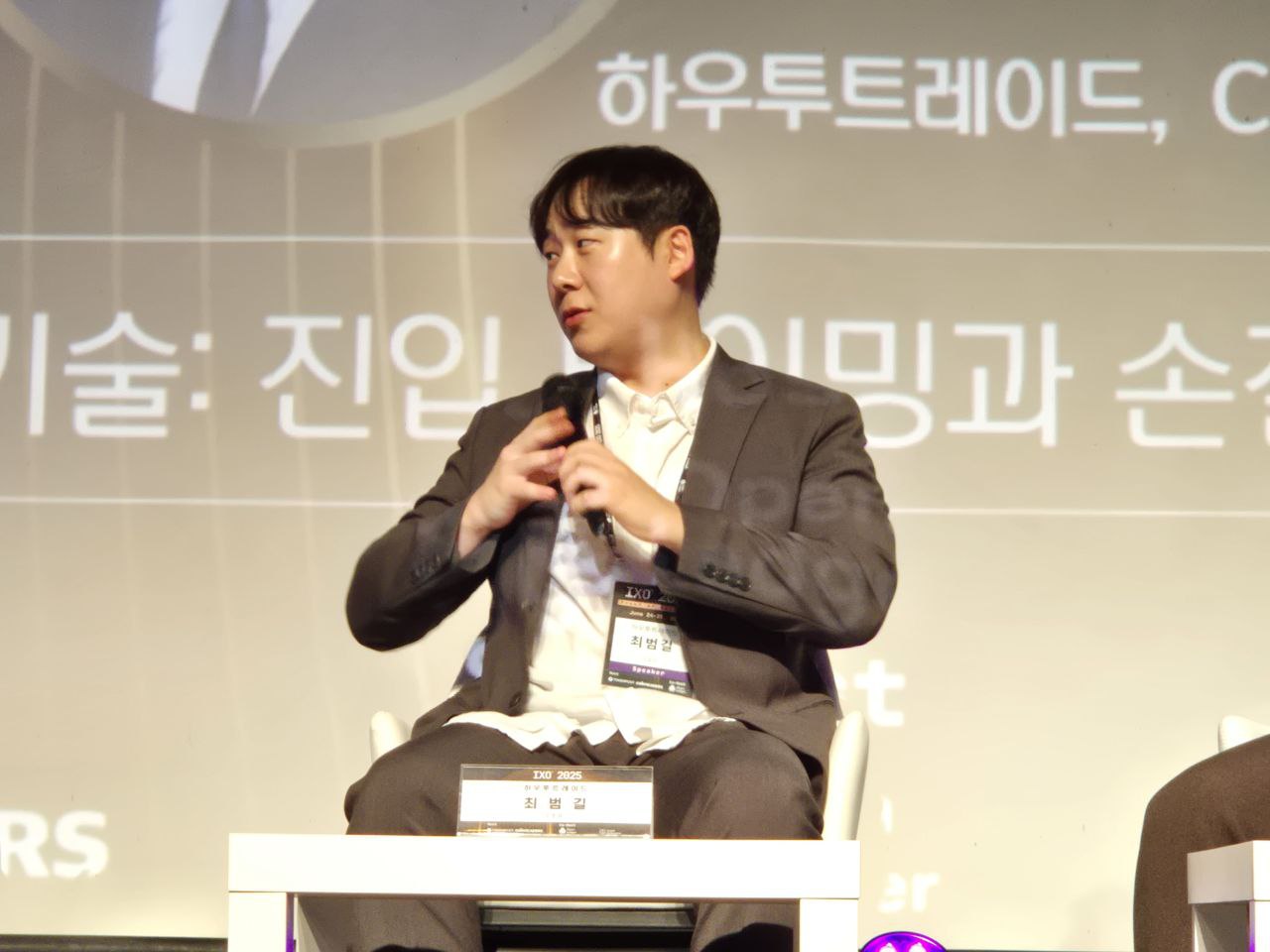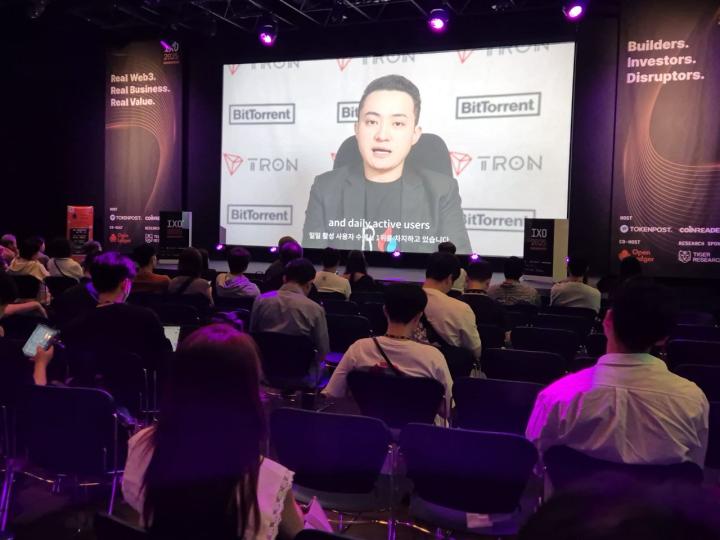It was shared that in short-term trading, the key to profitability is ultimately 'risk management and strategic habits' rather than 'timing'.
At the global Web3 roadshow 'IXO™ Season 3' held at the Seoul Textile Center on the 24th, a panel session on the topic of 'Short-Term Trading Techniques: Entry Timing and Stop-Loss Criteria' shared practical experiences on stock selection, stop-loss strategies, news and chart analysis methods, and mental management know-how.
The session was moderated by Kang Min-woo, creator of 'Donkkang', with Choi Beom-geol, CEO of HowToTrade, and Joshua from Mosaic Capital's trading division participating in the discussion.
Moderator Kang Min-woo, creator of 'Donkkang', asked the first question: "What do you consider to be a more important factor in long-term trading than entry timing?" He added, "Many investors tend to focus only on the entry point, and I want to hear each person's experiences and insights into the core elements that determine actual profits."
Joshua, Head of Trade at Mosaic Capital, emphasized that "stock selection and risk management are key, rather than entry timing." He explained, "In the crypto market where valuation is difficult, stocks with strong narratives have large rewards but also large risks, making stop-loss criteria essential." He added, "Stock selection and stop-loss strategies are the most important factors determining profit rates."
Choi Beom-gil, CEO of HowToTrade, said, "I often enjoy short-term trading with leverage centered on Bitcoin" and "The larger the leverage, the shorter the position holding period should be to reduce loss risk." He shared that "the average holding period is within two days, and the strategy is to respond flexibly according to market conditions."

The moderator then asked how each participant established their stop-loss criteria, requesting specific cases that beginners could reference, noting that stop-loss standards would change as market experience accumulates.
Choi explained, "When I first started investing, I didn't know about stop-loss, but now I set the stop-loss line before entering." He said, "I use support and resistance lines, Fibonacci, and moving averages as criteria, and immediately stop loss if those price levels are not maintained." He emphasized, "Having such criteria helps avoid emotional trading and create a stable profit structure."
Joshua said, "I use an absolute stop-loss criterion that limits risk proportion to 1-5% of total assets" and "When taking a long position, I also use a spread strategy by shorting stocks with high inflation concerns." He assessed that "this strategy helps effectively limit loss margins even in rapidly changing markets."
The moderator asked about the effectiveness of technical analysis versus news events in short-term trading, wanting to hear practical investment strategies and experiences about where more weight is placed when predicting price movements.
Choi evaluated that "news is often pre-reflected or difficult to predict, so chart analysis is more practical." He explained, "I set the stop-loss line based on the 60-day moving average, and if the criteria are clear, it's sufficient to respond even without news."
Joshua emphasized, "While it's true that information is pre-reflected in charts, missing event-based flows means losing big profit opportunities." He added, "Successful traders generate major profits from news-based large waves, so ultimately, technical and news analysis must be conducted in parallel."

Sharing Investment Failure Experiences... Strong on Stop-Loss Timing and Risk Preparation
The 'Donkkang' creator Kang Min-woo then requested personal cases by asking, "What is the most memorable failure experience, and what lessons were learned?"
Choi revealed, "On May 19, 2021, during the Bitcoin crash, I experienced a $1 million loss." He explained, "I should have stopped loss at the minus 30% point, but due to greed, I held on, leading to larger losses. At the time, the Binance trading suspension compounded the issue, completely missing the stop-loss timing, and my position was settled in 25 seconds, resulting in massive losses." He added, "I deeply realized the importance of setting stop-loss criteria before entry."
Joshua shared, "During the Terra incident, I was on an overseas business trip and was unable to check market conditions for fourteen hours due to in-flight internet disconnection." He said, "When I got off the plane, the market had crashed 40-70% due to Terra's collapse." He emphasized, "I learned the lesson that one must be prepared for minimal risk management even in unexpected situations." He added, "Since then, I thoroughly prepare in advance, including internet accessibility, especially during periods with high potential for significant losses."

The moderator then asked, "How did you recover mentally after that failure," requesting experiences of recovery that investors could relate to.
Representative Choi said, "I spent almost three months not going out and reflecting on myself." He explained, "I stayed in my room all day with blackout curtains drawn, away from the market, and as time passed, I gained the will to return by looking at breakthrough signals on the chart." He added, "Through records and reflection, I gained the strength to look at the market again."
Joshua said, "Company partners also recommend taking a 10-day break after a big loss" and "When the entire market is in panic, it's important to look for recovery opportunities, and when it's not, to avoid emotional trading through sufficient rest." He added, "After a loss experience, I only start trading again after more than 10 days of sufficient rest, but if the market is in a sudden panic, I may quickly engage in recovery trading depending on the situation."
When asked how he responds in a market with low volatility, Representative Choi said, "The current market with around 5% daily volatility is the most interesting" and "A strategy of entering after confirming a rebound near the support line is effective." He added, "I'm actively responding while aiming for short-term opportunities."
Joshua said, "In a sideways market, I reduce trading volume and wait for trend reversal signals" and "I'm currently resting as much as possible to focus my energy on a good market." He emphasized, "It's important to save energy to catch better opportunities."
When asked for advice for novice investors, Joshua stressed, "It's important to try to eliminate bad habits every day" and "Good habits accumulate, but bad habits must be consciously erased." He added, "Consistent self-examination determines trading performance."
Representative Choi said, "Recording is the best way to review" and "If you write a trading journal noting emotions, strategies, and results, your skills will significantly improve in 1-2 years." He advised, "Through recording, you can establish your own investment philosophy."
'IXO™ Season 3' is a Web3 conference focused on 'investment practice', to be held on the 24th and 25th at the Seoul Textile Center. It is co-hosted by blockchain media TokenPost and CoinLeaders, and co-organized by decentralized data trust protocol 'OpenLedger'.
IXO™ presents a fundraising concept that goes beyond existing ICO, IEO, and IDO methods, being more Web3-friendly and community-centric. The first event last April drew over 1,000 people, opening a new chapter in the Web3 community, and expanded this flow through Season 2 in July with the theme 'Embrace the Future'.
The theme of Season 3 is 'Proof of Business'. It is planned as a practical Web3 conference that highlights only projects that have actually proven their actual usability, profitability, and user base, beyond technical vision and marketing.
Domestic and international blockchain experts, DAO operators, practical investors, researchers, and traders will participate, providing effective insights from an investor's perspective. The event is structured as a B2C roadshow with project booths, custody demos, and networking, expected to provide an opportunity for communities and individual investors to meet verified Web3 projects.
Registration for IXO™ Season 3 is possible through the Luma link. Real-time announcements and more details can be found through the following social media channels.
IXO™ 2025 Official Channels
Website https://www.ixo.day
Twitter https://twitter.com/ixo_day
LinkedIn https://www.linkedin.com/showcase/ixoday



